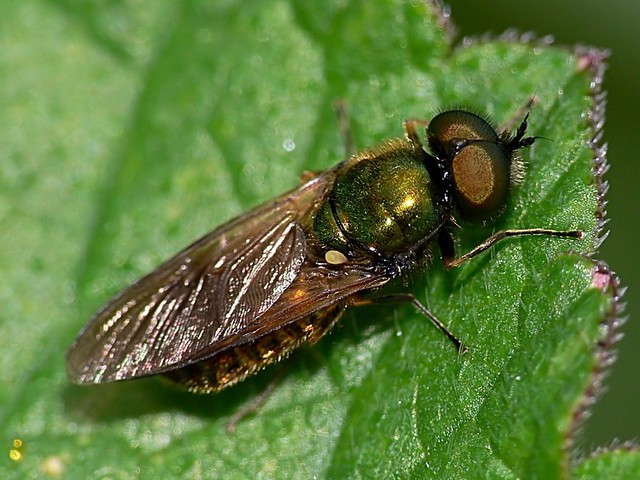Chloromyia formosa

Kingdom: Animalia
Phylum: Arthropoda
Class: Insecta
Order: Diptera
Family: Stratiomyidae
Genus: Chloromyia
Species: C. formosa
Common name: Broad centurion
The Broad-bodied Bright Fly (Chloromyia formosa) is one of the most striking and easily recognised members of the soldier fly family (Stratiomyidae). It is a common species throughout the UK and Europe, found in woodlands, hedgerows, gardens, and meadows, especially from May to August.
This species is known for its brilliant metallic colouring. The male has a bronze-green body, while the female shows a beautiful blue-green abdomen with a bronzy or purplish sheen. Both sexes have a broad, flattened body, clear wings, and large eyes, though the male’s eyes meet at the top of the head while the female’s are widely separated.
Adults are often seen resting on leaves in sunny spots or feeding on nectar and pollen from umbellifer flowers (such as cow parsley and hogweed).
The larvae live in damp soil, leaf litter, or decaying plant material, where they feed on decomposing organic matter. They help to break down waste and improve soil health, making this fly an important decomposer in woodland and meadow ecosystems.
Despite their vivid metallic appearance, these flies are harmless and add a splash of colour to shady woodland paths and summer gardens.
